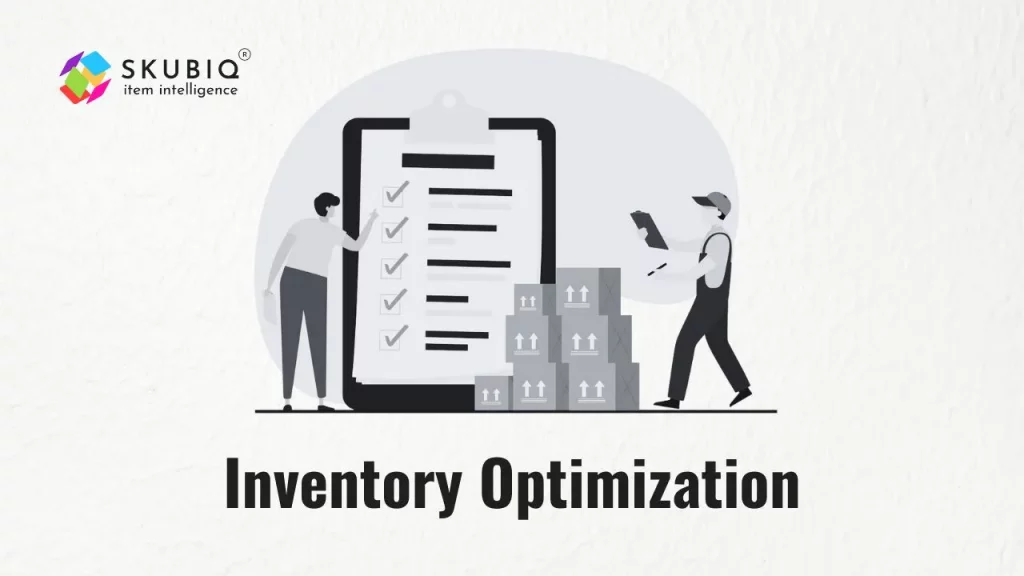In the dynamic landscape of supply chain management, the effective management of inventory is crucial for the success of businesses. As industries evolve and customer expectations rise, companies must adopt advanced strategies to surpass traditional inventory optimization initiatives. In this article, we will explore six key strategies that not only address the challenges posed by inventory optimization but also leverage cutting-edge technologies, such as inventory optimization software, to enhance the entire supply chain ecosystem.
1. Embrace Technology: The Foundation of Modern Inventory Optimization
To excel in inventory optimization, companies must integrate advanced technologies into their systems. Inventory optimization software plays a pivotal role in this regard, offering real-time insights into inventory levels, demand forecasting, and order fulfillment processes. Implementing a robust inventory management system allows organizations to streamline operations, minimize errors, and optimize stock levels, contributing to overall efficiency.
Leveraging Inventory Optimization Software for Precision
In the realm of supply chain inventory management, technology-driven solutions empower businesses to make data-driven decisions. Inventory optimization software utilizes algorithms and predictive analytics to forecast demand accurately. By leveraging such tools, organizations can align their inventory levels with market demands, thereby reducing the risk of overstocking or stockouts.
2. Integration of Inventory Management in Supply Chain Management
Inventory management in supply chain management is a collaborative effort that involves seamless coordination across various stages of the supply chain. To surpass inventory optimization initiatives, businesses should integrate their inventory management practices with broader supply chain management strategies.
The Synergy of Warehouse Inventory Management
Efficient warehouse inventory management is a critical aspect of integrated supply chain management. By optimizing warehouse processes, such as picking, packing, and shipping, companies can enhance overall inventory optimization. Utilizing automated systems and RFID technology in warehouses minimizes errors, reduces lead times, and ensures timely order fulfillment.
3. Data-Driven Decision-Making for Effective Inventory Optimization
In the digital age, data is the cornerstone of effective decision-making. Businesses should leverage data analytics tools to gain insights into customer behavior, market trends, and internal processes. This data-driven approach enables organizations to refine their inventory management strategies and make informed decisions regarding stock levels and replenishment.
Harnessing Big Data for Enhanced Inventory Management
Big data analytics is revolutionizing inventory optimization by providing a comprehensive understanding of various factors influencing demand and supply. By analyzing historical data and market trends, businesses can optimize inventory levels, improve forecasting accuracy, and enhance the overall efficiency of the inventory management system.
4. Agile and Flexible Inventory Optimization Strategies
In today’s rapidly changing business environment, agility is key to success. Companies should adopt agile inventory optimization strategies that allow them to adapt quickly to market fluctuations and changing customer demands.
Adapting to Market Dynamics in Inventory Management
An agile approach to inventory management involves regularly reviewing and adjusting stock levels based on market trends and seasonal variations. By embracing flexibility in the order fulfillment process, businesses can efficiently respond to unexpected changes in demand and supply, minimizing the impact of disruptions on overall inventory optimization.
5. Collaboration Across the Supply Chain for Seamless Inventory Management
Effective collaboration with suppliers, distributors, and other stakeholders is essential for successful inventory optimization. By establishing strong relationships and communication channels, businesses can create a more transparent and responsive supply chain.
Strengthening Partnerships for Holistic Supply Chain Inventory Management
Collaborative efforts in supply chain inventory management involve sharing information on demand forecasts, production schedules, and inventory levels. This collaborative approach ensures that all stakeholders are aligned, reducing the likelihood of stockouts or excess inventory. Utilizing technology for real-time data sharing further enhances the efficiency of the entire inventory management system.
6. Continuous Monitoring and Improvement in Inventory Optimization
Achieving optimal inventory optimization is an ongoing process that requires continuous monitoring and improvement. Businesses should implement performance metrics, key performance indicators (KPIs), and regular audits to assess the effectiveness of their inventory management strategies.
Implementing Continuous Improvement Strategies
Regular reviews of inventory optimization strategies allow businesses to identify areas for improvement and optimization. This involves refining forecasting models, adjusting reorder points, and enhancing the efficiency of the order fulfillment process. Continuous improvement ensures that organizations stay ahead of the curve in the ever-evolving landscape of inventory management in supply chain management.
Conclusion
In conclusion, surpassing inventory optimization initiatives requires a holistic approach that combines advanced technologies, collaborative efforts, and continuous improvement.
By embracing cutting-edge solutions such as inventory optimization software and integrating inventory management practices with broader supply chain management strategies, businesses can navigate the complexities of the modern market and achieve optimal inventory levels.
Through data-driven decision-making, agile strategies, and collaborative partnerships, organizations can not only meet but exceed customer expectations, ensuring long-term success in the competitive world of supply chain management.



